
Are you searching for the perfect calisthenics program but feeling overwhelmed by endless options promising “insane strength gains” and “unbelievable transformations”?
You’re not alone. With hundreds of programs competing for your attention (and wallet), finding the right fit can feel impossible.
This comprehensive, data-driven guide cuts through the marketing hype to help you choose a calisthenics program that actually delivers results. I’ve personally tested and analyzed the most popular options to save you time, money, and frustration.
March 2025 Update
This guide was first published in 2019 but has been completely revamped for 2025 with:
- Fresh analysis of the top-performing programs
- New program additions based on reader requests
- Updated recommendations reflecting the latest research on bodyweight training
- Detailed progression pathways for beginners through advanced athletes
After extensive testing, I’ve found that paid programs consistently deliver superior results compared to free alternatives. While I’ve included free options in this guide, serious progress requires structured programming that most free resources simply don’t provide.
The Best Calisthenics Programs for 2025
Before diving into detailed reviews, here are my top recommendations based on comprehensive testing and user feedback:
- Best for Complete Strength Development & Structured Progression: Calisthenic Movement Complete Program
- Best for Personalized Skill-Based Training: The Movement Athlete
- Best for Injury Prevention & Movement Mastery: Vahva Fitness
For long-term, sustainable progress in calisthenics, you need a program that offers:
- Progressive overload – Systematically increasing difficulty as you improve
- Proper form instruction – Detailed guidance to prevent injuries
- Balanced programming – Addressing all movement patterns and muscle groups
- Skill development pathways – Clear progression toward advanced movements
Calisthenic Movement and The Movement Athlete excel in these areas, offering comprehensive systems that grow with you from beginner to advanced levels.
For those focused on specific skills, FitnessFAQs and Simonster provide excellent specialized programs, with each coach having particular strengths in different movement patterns.
Programs Included in This Review
I’ve personally tested and analyzed these calisthenics programs and apps:
Premium Programs
- Calisthenic Movement – Comprehensive progression system
- The Movement Athlete – Personalized app-based training
- Vahva Fitness – Movement-focused approach
- FitnessFAQs – Skill-specific programs
- Simonster – Advanced skill development
- Bar Brothers “The System” – 12-week transformation
- Antranik’s Rings Routine – Gymnastics rings focus
- Saturno Movement – Hybrid training system
Free & App-Based Options
- Thenx app – Free & premium workouts
- Reddit Recommended Routine – Community-developed program
- Caliverse app – Free workout library
For each program, I’ve evaluated:
- Format and accessibility
- Cost and value proposition
- Required equipment
- Progression methodology
- Quality of instruction
- Suitability for different experience levels
1. Calisthenic Movement: The Gold Standard
Format: Online platform
Cost: Complete Calisthenics Level 1-5 Bundle – $249.99 (lifetime) or 10 payments of $28.99/month
Required equipment: Pull-up bar, dip bars, rings (for higher levels)
Get it here: www.calimove.com
Calisthenic Movement (Cali Move) stands as the most comprehensive and well-structured calisthenics program available today. Created by Sven Kohl and El Eggs, who bring over 25 years of combined fitness training experience, this program delivers exceptional value through its methodical progression system.
After testing numerous programs, I rank Calisthenic Movement as the top choice for anyone serious about long-term calisthenics development. Here’s why:
Program Structure: A True Progressive System
The Complete Calisthenics Bundle includes 5 levels, each containing 19 weeks of programming. This provides nearly two years of structured training that systematically builds strength and skill.
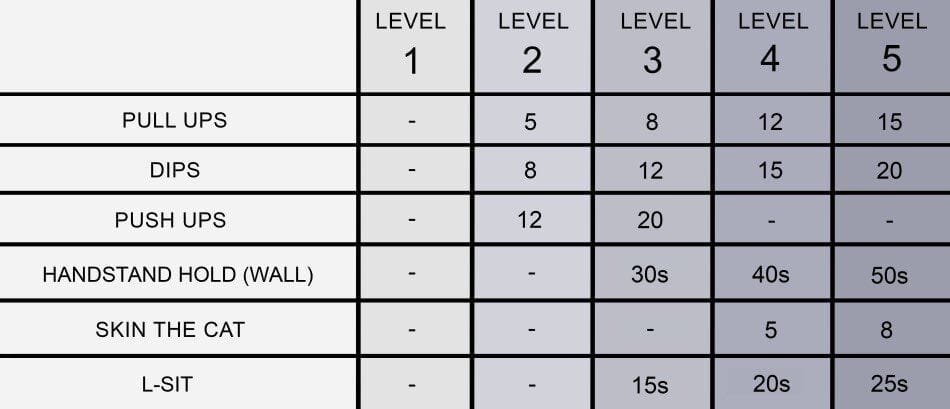
Each level is divided into 4 phases, with each phase beginning with a test week to benchmark your abilities. This scientific approach ensures you’re always working at the appropriate intensity.
What sets Cali Move apart is how they balance consistency with progression:
- Exercises repeat within phases (typically 3-4 weeks) to allow for measurable improvement
- Sets and intensity increase progressively throughout each phase
- Test weeks provide clear metrics to track your development
- New phases introduce more challenging variations as you advance
This structure creates the perfect balance between consistency (needed for skill development) and variety (needed for motivation and comprehensive development).
Instruction Quality: Exceptional Detail and Clarity
The instructional quality of Cali Move is outstanding. Each exercise includes:
- Comprehensive video demonstrations (1-7 minutes) explaining proper technique
- Short reference clips for quick form checks during workouts
- Clear explanations of common mistakes and how to avoid them
- Visual cues showing which muscles should be engaged
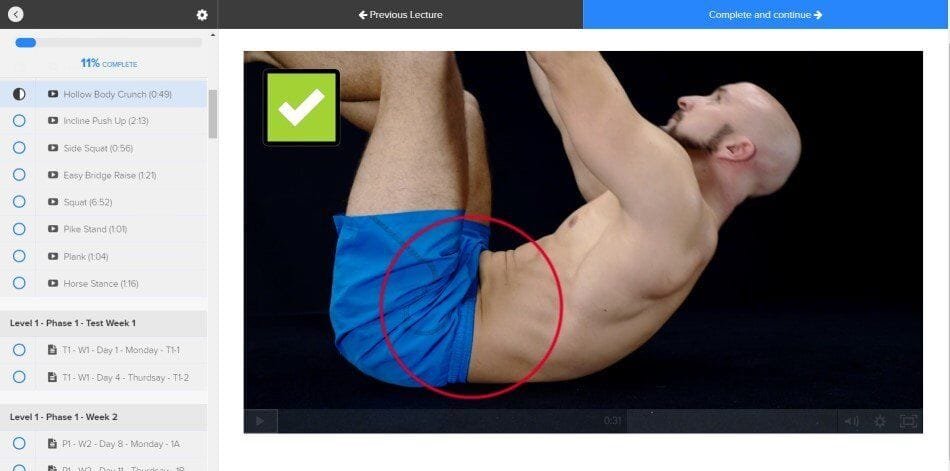
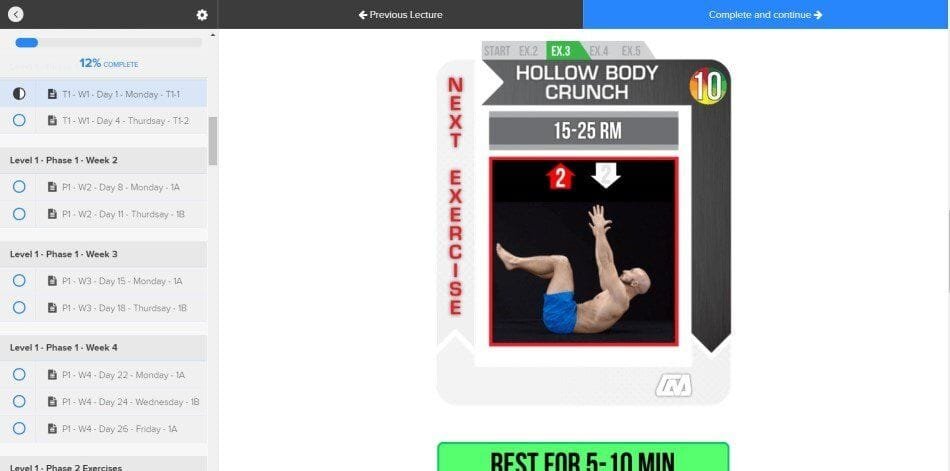
Why Calisthenic Movement Ranks #1
After testing all major calisthenics programs, Cali Move stands out for several reasons:
- Truly scalable difficulty – Even as an advanced practitioner, I found Level 5 challenging and had to work hard to complete all progressions
- Scientific progression – The phase system with test weeks ensures you’re always working at the optimal intensity
- Superior instruction – Sven and El Eggs provide the clearest, most detailed exercise demonstrations available
- Comprehensive approach – Covers strength, skill, mobility, and programming principles
- Excellent platform – The Teachable interface makes navigation intuitive and accessible
For anyone looking to build a solid foundation in calisthenics while developing impressive strength and skills, Calisthenic Movement’s Complete Bundle offers unmatched value.
2. The Movement Athlete: Personalized Skill Development
Format: iOS and Android app
Cost: $157 annual subscription
Required equipment: Varies based on selected skills and level
Get it here: themovementathlete.com
The Movement Athlete takes a fundamentally different approach to calisthenics training through its adaptive, AI-driven programming. This app-based system creates truly personalized workout plans based on your current abilities and chosen skill goals.
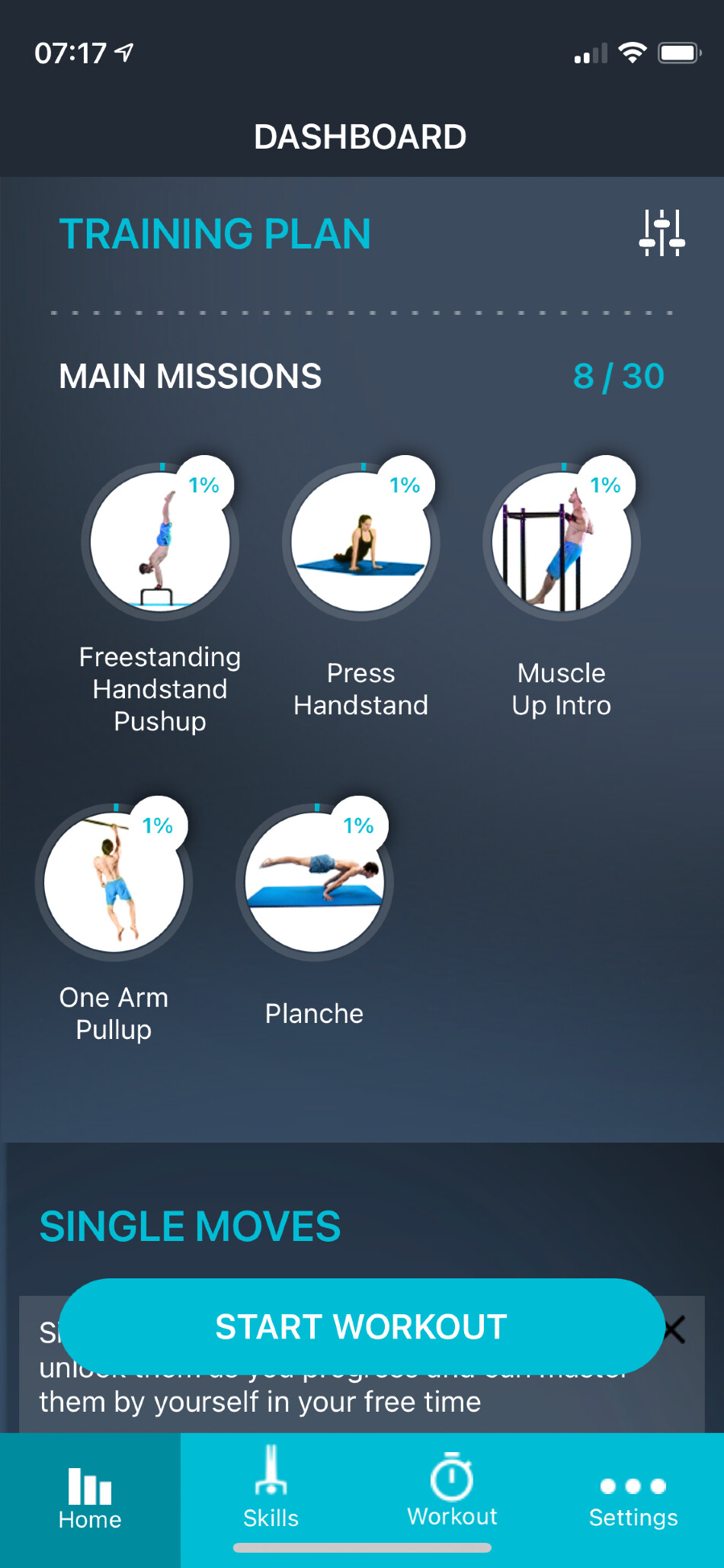
Personalization: The Key Differentiator
What makes The Movement Athlete exceptional is its personalization system:
- Comprehensive assessment – When you start, the app evaluates your current abilities across multiple movement patterns
- Skill selection – You choose up to 5 skills you want to master (from handstands to muscle-ups to planches)
- Adaptive programming – The app creates workouts specifically tailored to your assessment results and goals
- Real-time adjustment – As you rate the difficulty of each set, the app continuously recalibrates your program
This adaptive approach ensures you’re always working at the optimal level of challenge—never too easy, never impossibly hard.
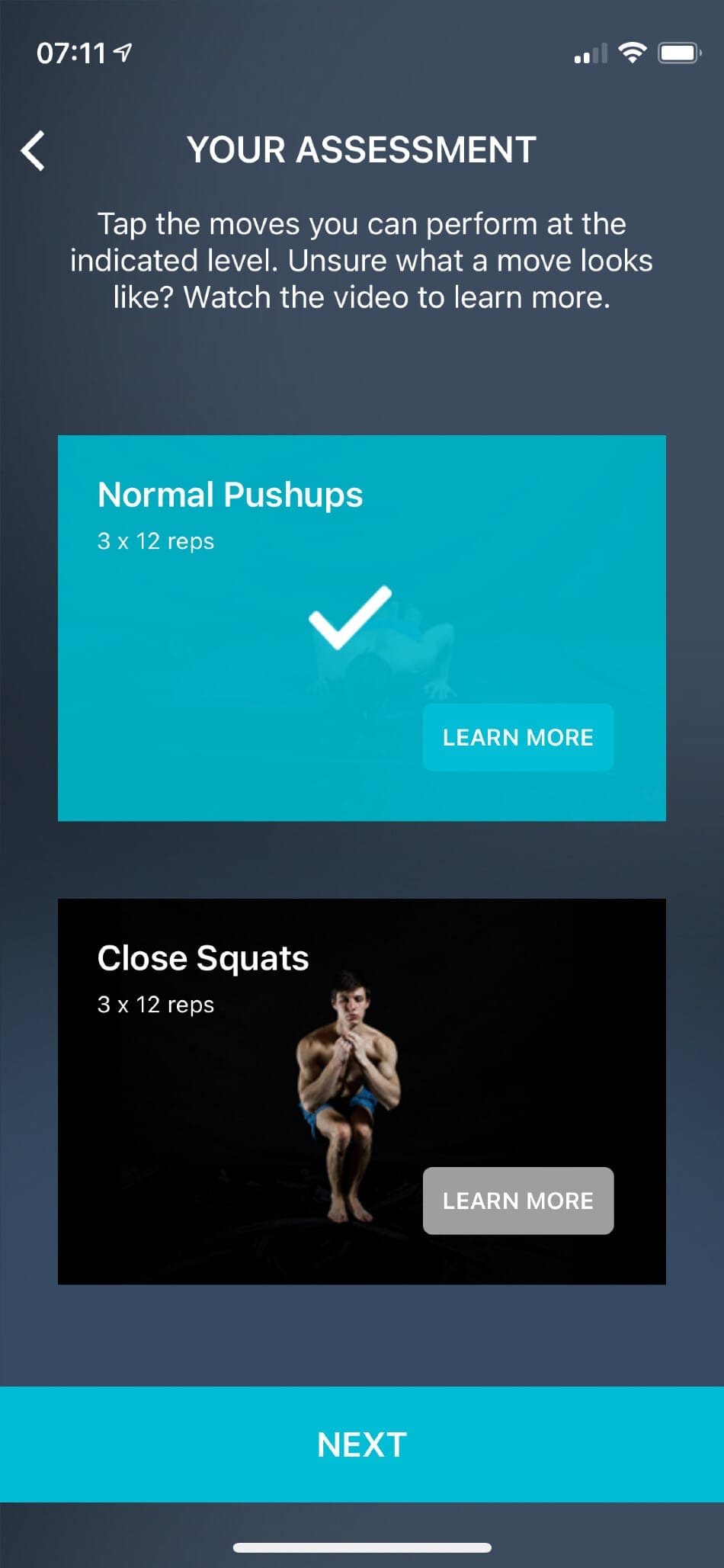
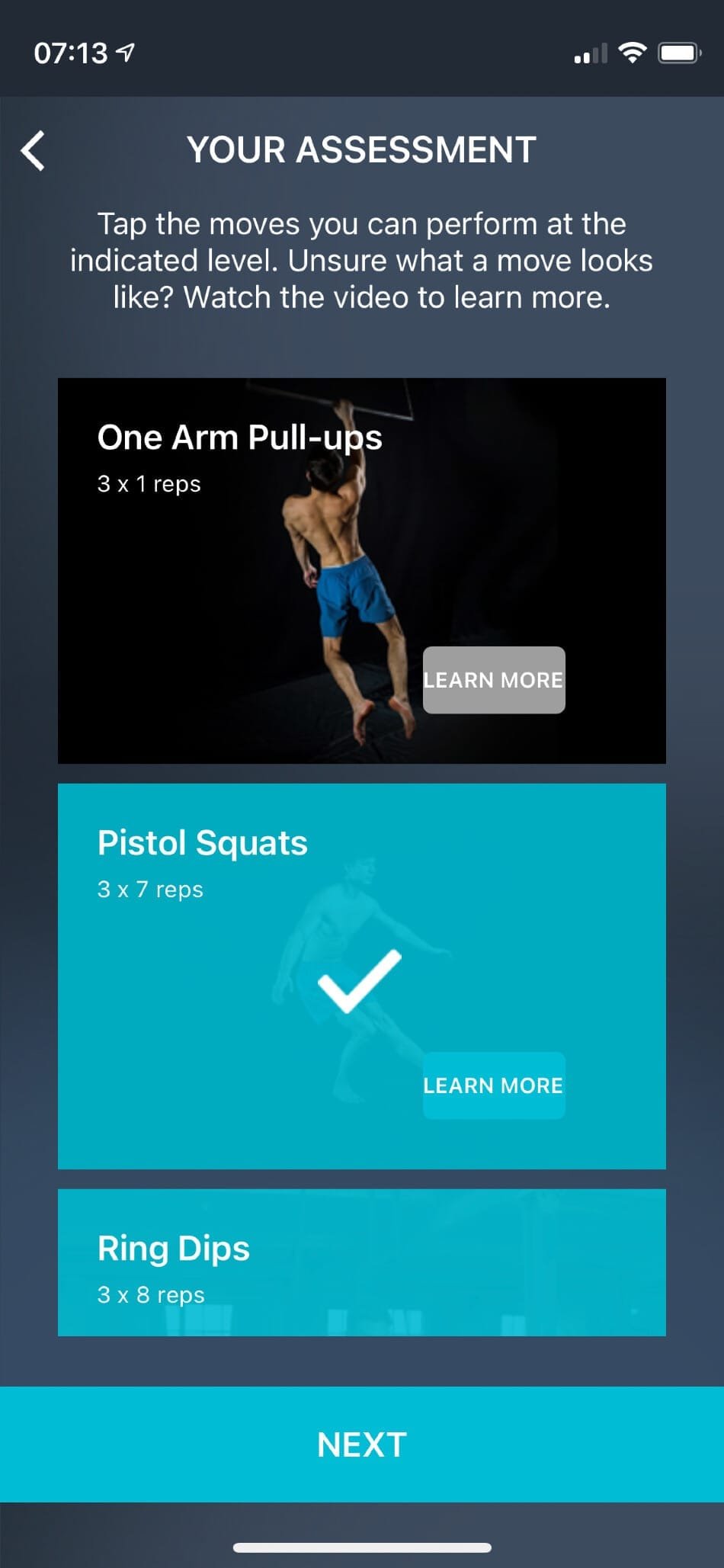
Smart Customization Features
The Movement Athlete offers several innovative customization options:
- Equipment profiles – Create different setups for home, gym, or park workouts
- Time adjustment – Modify workout duration based on your available time
- Rest period preferences – Customize rest intervals to match your conditioning level
- Web dashboard – Track detailed progress metrics beyond the app interface

Room for Improvement
While The Movement Athlete offers an exceptional experience overall, there are a few areas that could be enhanced:
- The warm-up routines are relatively brief and could benefit from more customization options
- Exercise demonstrations, while clear, lack the comprehensive form explanations found in Calisthenic Movement
- Rest period visibility could be improved in the workout overview screens
Who Should Choose The Movement Athlete?
The Movement Athlete is ideal for:
- Those who want programming tailored specifically to their current abilities
- Calisthenics practitioners focused on achieving specific skills
- People who prefer app-based training with progress tracking
- Those who want their workouts to adapt based on their performance
If you value personalization and skill-focused training, The Movement Athlete offers the most sophisticated adaptive programming system available in calisthenics today.
3. Vahva Fitness: Movement Mastery & Injury Prevention
Format: Online platform
Cost: Athlete 20XX ($997) and Movement 20XX ($497)
Required equipment: Minimal – primarily bodyweight-focused
Get it here: vahvafitness.com

VAHVA Fitness, founded by Samuli T. Jyrkinen and Eero Westerberg in 2015, offers a unique approach that blends Eastern and Western training methodologies. Their programs focus on movement quality, joint health, and functional strength rather than just achieving specific skills or aesthetics.
A Holistic Approach to Movement
What sets VAHVA Fitness apart is their comprehensive philosophy that integrates:
- Traditional bodyweight strength training
- Animal movement patterns for mobility and coordination
- Old-school physical culture methods (1850-1950)
- Joint preparation and “bulletproofing” techniques
- Movement flows that combine strength, mobility, and control
This integrated approach creates exceptionally well-rounded athletes who develop strength without sacrificing mobility or joint health.
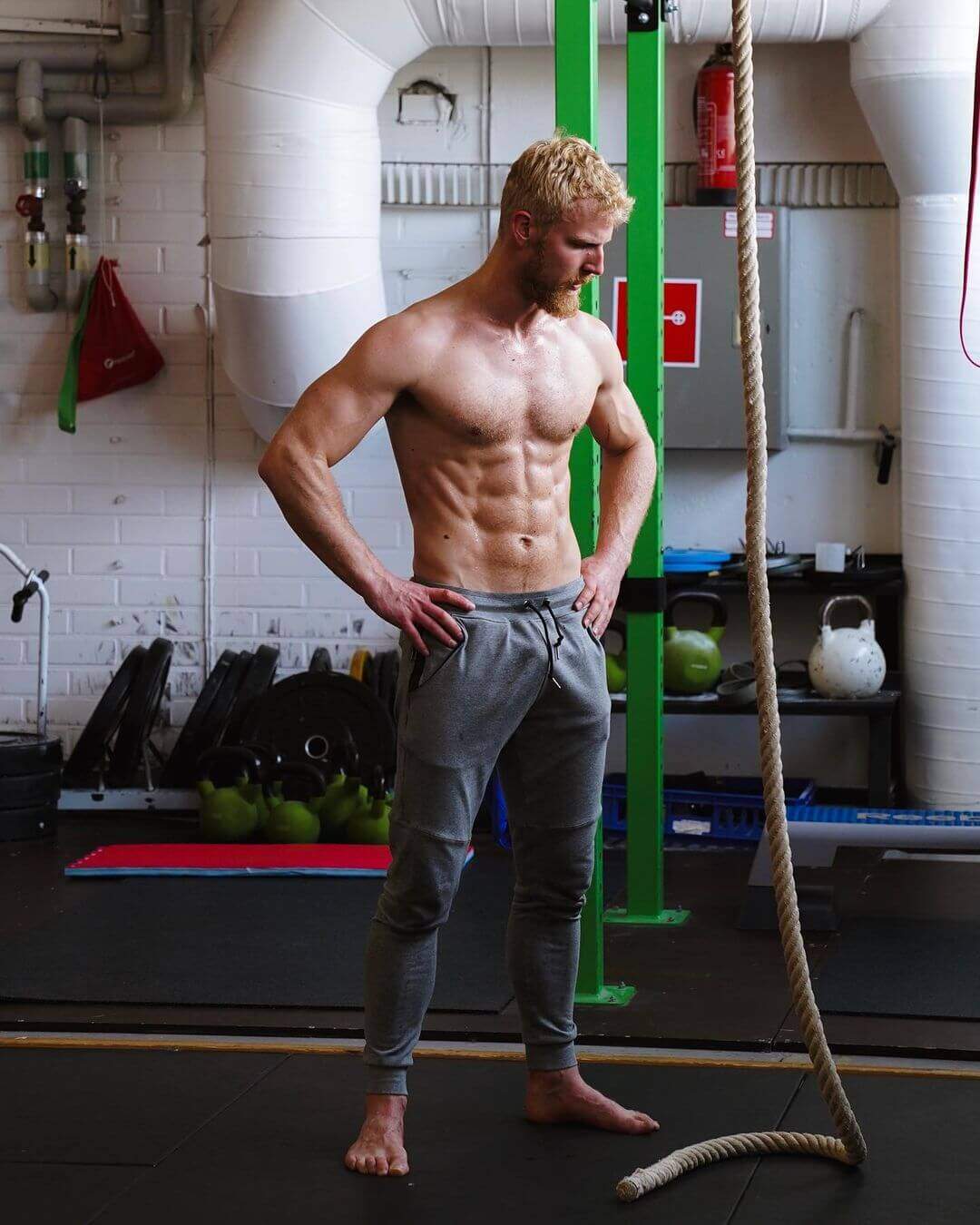
Program Highlights
VAHVA Fitness offers several standout features:
- Joint preparation – Specialized techniques to strengthen and stabilize joints, reducing injury risk
- Movement variety – Daily flows that never become repetitive or boring
- Rehabilitation focus – Programs that help resolve existing injuries while building strength
- Complementary to other disciplines – Training that enhances performance in yoga, martial arts, and conventional strength training
“The greatest thing about Athlete 20XX is basically – it helps you not to get injured. And if you have an injury, you can solve the injury which can stop some of your old movements for a while, or maybe even forever. (With Athlete 20XX,) you still have huge gains and enjoy your body.” – Markus (PhD in Sports Science)
Who Should Choose VAHVA Fitness?
VAHVA Fitness programs are particularly valuable for:
- Those recovering from or working around injuries
- Athletes looking to improve movement quality and joint health
- Practitioners of other disciplines seeking complementary training
- Anyone interested in a more holistic approach to physical development
- Those who find conventional training repetitive or boring
If you value movement quality, joint health, and a more integrated approach to physical development, VAHVA Fitness offers a unique and effective training methodology.
Skill-Specific Programs: FitnessFAQs & Simonster
FitnessFAQs
Format: Online programs and resources
Cost: $95 per program (lifetime access)
Equipment: Primarily gymnastic rings
Get it here: FitnessFAQs programs

Daniel Vadnal’s FitnessFAQs offers specialized programs focusing on specific skills and movement patterns. His most popular program, Body By Rings, has helped thousands develop impressive upper body strength using gymnastic rings.
FitnessFAQs programs excel in:
- Detailed explanation of biomechanical principles
- Clear progression pathways for advanced skills
- High-quality video demonstrations
- Evidence-based training methodologies
While the weekly structure can be somewhat repetitive, the educational value in the accompanying eBooks and videos is exceptional, making these programs particularly valuable for those who want to understand the “why” behind their training.
Simonster
Format: Online programs and resources
Cost: $59-$99 per skill program
Equipment: Varies by program
Get it here: simonsterstrength.com
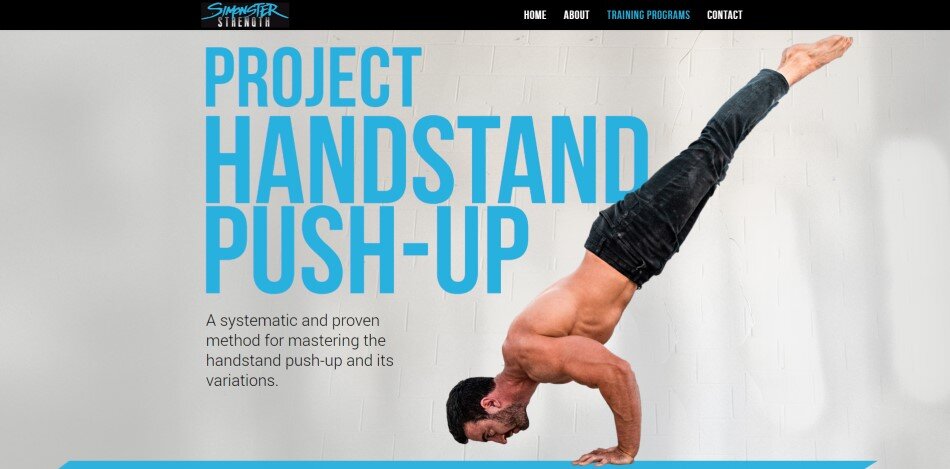
Simon Ata (Simonster) offers specialized skill programs focusing on advanced calisthenics movements. His programs are particularly strong for handstand variations, planche, and human flag development.
Simonster’s programs stand out for:
- Visually engaging instructional materials
- Multiple program difficulty options
- Flexibility to design custom workouts
- Beautifully designed PDF resources
His Handstand Push-Up program is particularly excellent, offering both structured plans and the flexibility to customize your approach based on your specific needs and preferences.
Which Skill-Specific Program Should You Choose?
Both FitnessFAQs and Simonster offer excellent skill-focused programs, but they have different strengths:
- Choose FitnessFAQs for: Ring-based training, detailed biomechanical explanations, and methodical progression systems
- Choose Simonster for: Handstand variations, human flag, planche work, and more visually engaging materials
For most advanced skills, I recommend selecting based on which specific skill you’re targeting rather than choosing between the two coaches.
Other Notable Programs
Bar Brothers “The System”
Format: Online videos and PDF
Cost: $48.68 (one-time payment)
Best for: Beginners seeking structure
This 12-week program provides a straightforward approach for beginners. While the production quality is somewhat amateur, the structured daily workouts make it accessible for those just starting their calisthenics journey.
The program is best suited for complete beginners who need explicit guidance on what to do each day, though more advanced practitioners will quickly outgrow it.
Antranik’s Rings Bodyweight Training
Format: Online program
Cost: $59.95 (lifetime access)
Best for: Ring training enthusiasts
Created by respected coach Antranik, this program focuses exclusively on gymnastic rings training. It stands out for its educational approach, drawing from respected sources in the bodyweight fitness community.
The program excels in teaching proper technique and understanding of movement principles, though it requires more self-direction than some other options.
Thenx App
Format: iOS and Android app
Cost: Free basic version, $9.99/month premium
Best for: Visual learners seeking workout variety
The Thenx app offers exceptional production quality and a clean, intuitive interface. Its free “Daily Workouts” feature provides excellent value, while premium members gain access to technique guides for advanced skills.
The app excels in demonstration quality but lacks the comprehensive progression system of top-tier programs.
Reddit Recommended Routine (RR)
Format: Online wiki
Cost: Free
Best for: Self-directed beginners
This community-developed routine provides a solid foundation for beginners at no cost. The program focuses on progressive overload through exercise progressions rather than simply increasing reps.
While it lacks the polish and comprehensive instruction of paid programs, it’s an excellent starting point for those unwilling or unable to invest financially.
How to Choose the Right Calisthenics Program
When selecting a calisthenics program, consider these key factors:
1. Your Current Level
Be honest about your starting point. Many programs claim to be suitable for all levels but actually cater to specific experience ranges:
- True beginners: Calisthenic Movement Level 1, Bar Brothers, Reddit RR
- Intermediate: Movement Athlete, Calisthenic Movement Level 2-3
- Advanced: Skill-specific programs from FitnessFAQs or Simonster
2. Your Primary Goals
Different programs emphasize different outcomes:
- Overall strength development: Calisthenic Movement
- Specific skill mastery: Movement Athlete, FitnessFAQs, Simonster
- Movement quality & injury prevention: VAHVA Fitness
- Physique transformation: Bar Brothers, Body By Rings
3. Learning Style Preference
Consider how you best absorb information:
- Visual learners: Thenx, Simonster (high-quality video demonstrations)
- Detail-oriented learners: Calisthenic Movement, Antranik (comprehensive explanations)
- Interactive learners: Movement Athlete (adaptive feedback system)
4. Available Equipment
Ensure the program matches your equipment access:
- Minimal equipment: VAHVA Fitness, Bar Brothers, Reddit RR
- Rings focus: Antranik’s Rings Routine, Body By Rings
- Customizable based on equipment: Movement Athlete (equipment profiles)
Conclusion: Investing in Your Calisthenics Journey
After extensively testing the most popular calisthenics programs available, I’ve found that the best programs share four essential qualities:
- Expert coaching that clearly explains proper technique and common mistakes
- Progressive programming that adapts to your developing abilities
- Motivational structure that keeps you engaged and consistent
- Educational content that helps you understand the principles behind effective training
Based on these criteria, my top recommendations remain:
- Best for comprehensive strength development: Calisthenic Movement
- Best for personalized skill training: The Movement Athlete
- Best for movement quality & injury prevention: VAHVA Fitness
Remember that the most effective program is ultimately the one you’ll follow consistently. While free resources can provide a starting point, investing in a quality program that matches your goals and learning style will accelerate your progress significantly.
The structured progression, expert instruction, and comprehensive approach of premium programs deliver value far beyond their cost when compared to the time you might waste following ineffective or poorly designed free workouts.
Your Feedback Matters
I’ve invested hundreds of hours testing these programs to create this comprehensive guide. If you’ve used any of these programs or have questions about which might be right for you, I’d love to hear from you in the comments below.
Your experiences help keep this guide relevant and valuable for the entire calisthenics community.
Acknowledgments
Special thanks to the program creators who provided access for this review: Stefan Heria, Fabian (Saturno Movement), El Eggs (Calisthenic Movement), Simon Ata, Daniel Vadnal, Antranik, and the Movement Athlete Academy team.

Founder of www.calisthenics-101.co.uk. Training calisthenics since 2012.
Currently working on: 30 second one-arm handstand, muscle-up 360, straddle planche.
Some great free apps that I recommend is:
Darebee.com
Thenics(https://play.google.com/store/apps/details?id=com.abad.thenics)
I know Darebee have some great Pinterest content, but I’ve never really looked into their programs as I find their content a bit overwhelming.
For me that’s specifically down to how they name their content with clickbait type titles such as “Total Abs”, “Spartan Trials” and “Strength Protocol”. I guess I’m just not their typical audience!
I’ve used Thenics in the past, but felt it was left behind compared to some of the newer alternatives. Am I right in saying it’s only for Android too?
Hi Rick thank you for taking the time in putting all this together. I had exactly same doubts you have explained here. You helped me to decide how to start getting into calisthenics in the right way. Thanks a lot!
Glad I could be of help 🙂
Feel free to share the article with anyone else who may benefit from reading it!
I started Level 4 of Calisthenics Movement this year and it is a great program instead, highly recommended. Most likely going to buy Level 5 also after finishing current one.
I have been using Madbarz app to log my workouts, but it has some shortcomings. I will try Caliverse.
How did you decide to start at Level 4? Did you compare yourself to the Levels chart?
Do you think that program has been harder or easier than expected based on your initial understanding of the Level 4 requirements?
And good luck with Level 5 – I can tell you it’s far from easy!!
What do you think of “The Movement Athelete”? I’ve been using the app for 6 mos and I really like the time and effort they put into the warmup and cool down. I’m 53 so I really want to take care of my joints while increasing strength and flexibility. Any suggestions for the “young seniors” in the group?
Hi Wayne!
I haven’t had a chance to try it yet, but your comment has motivated me to sign up and try it out.
I’ve just completed the initial assessment, which was interesting. I wonder how ‘tailored’ these workouts will actually be to my answers… I’d be very impressed if they’ve built a system that can really do that, rather than just pushing you down one of a few predetermined routes.
In response to the rest of your comment, I should start by saying well done as you’ve already conquered the hardest part! You’ve been working out for a while now, putting the effort in, and (above all) you understand how important it is to focus on flexibility.
I’d say keep doing what you’re doing, remember to rest where your body needs it, and understand that flexibility improves slowly, so treasure the small improvements!
If you’re looking to change your workouts with some additional flexibility work on your off days, check out Tom Merrick who has some great follow-along videos for free on YouTube.
Excellent article, and I shall certainly look into these apps.
If I may offer one small critique however, regarding the lack of information regarding reliance on an internet connection. I have found that many apps require you to be “online” in order to access the content.
It may come as a surprise, but some of us are not always blessed with good quality internet, in my case, I am a seafarer working oil tankers mostly cross Pacific where a “good” connection is something akin to an original ADSL connection!! Not very helpful when you stumble across calisthenics mid-trip lol!
However, it also strikes me that there are likely users whom are concerned about data usage on mobile devices etc, so a small coverage regarding how good descriptions are compared to videos etc would he appreciated?
But otherwise, many thanks for the article, just having this info in one place is major boon!
P.S another “app” or trainer I have come across is Jake Gay who uses the Trainerize app for paid content, and pdf docs for some free routines – https://www.jgcalisthenics.co.uk/home
have you ever had a look at the schoolofcalisthenics content? Their IG page and YT vids are quite interesting
Not in any detail no. I actually lived in Nottingham for a few years, so it’s a shame I wasn’t still there when they had the school.
I’d love to try out their classes, and will pay them a visit if I’m ever back up that way.
Hi, I am confused between Antraniks Ring Routine and Vadnal’s Body by Rings- which one to choose, so please help me out.
1.Does Antranik’s Ring Routine have clear high quality videos regarding all the progressions of the strength work which he has mentioned( Straight arm and Bent arm movements)?
2. Does he have good progressions on leg hypertrophy movements?
Thank you in advance.
Judging by your comment alone, I’m going to guess you may be better suited to Daniel Vadnal’s program(s).
Antranik’s has more supporting text information, but I would say is certainly not presented in the same high level of quality that some of the other programs are. I like his theory, but a lot of his content references publically available videos on YouTube, which is why I think Antranik’s may not be the best choice for you.
Daniel on the other hand has plenty of video content which is only available in his platform. I’ve not had a chance to dig into his stuff in depth yet, but there’s an obvious difference in “clear high quality videos”, as you request.
I think Antranik only touches on a couple of things for legs, and again, both of them are around his YouTube stuff you can find anyway. On the other hand, you’ll have to pay for Daniel’s other “Limitless Legs” routine of you really want to dive into that.
Best of luck Pritam!
Hi Rick,
This is so good. Thank you so much for taking the time/effort to do all this. I’m on the verge of signing up to Simonster’s app. Wondering if you‘ve heard about it or had a chance to review it.
Thanks
Sorry Sher, but I haven’t tried it out unfortunately.
If you do sign up then I’d be keen to hear your thoughts though, I’d you mind sharing?
Can I also ask, out of interest, is there anything specific that’s got your attention with that app, compared to others out there?
Hi Rick, thanks for the reply. Sorry I wasn’t sure if my original comment went thru so I re-posted it a day later.
I’ve just been getting calisthenics related sponsored ads on instagram (obv due to the algorithm) and Simon’s profile was one of them. I guess it was just his own personal insane body control snd strength in the movements he does in that ad that got my attention. I know he’s one of many but the ad def stands out. Having said that, i know his own personal strength does not translate into a guaranteed successful program or ability to transfer the knowledge better than other options out there. But i’v certainly shortlisted it.
Just need to take the plunge.
Any feedback/opinions about Simonsters app macrofit?
What about ATHLEAN Xero https://athleanx.com/xero and frank medrano https://www.frankmedrano.com/workouts/
tx for the answer and best regards, Turbo
Hi Rick
I came across this StreetWorkout app while searching for Calisthenics Workouts
Have a look. I’m quite new to Calisthenics. I’m not sure towards what the workouts are focused, It seems pretty good for an free, basic offline media app
here is the link for android, it’s also on ios but i couldn’t find the link
https://play.google.com/store/apps/details?id=com.muzudre.Workout&hl=en
Any thought on this ?
Simon Project Calestenic on Fit , exactly what you said, a huge jump from beginner to intermediate, it was just not possible, I completed the beginner programs for 12 weeks ( which I must say gave me a good foundation ), and I gave up on the intermediate after 2 days.
I signed up with Calimove, logical and reasonable progression .
Yeah a big jump. Happy improving and stick with it. Calimove makes it much easier to progress in steps.
Calistree app is great imho
Rick, Thanks for this prodigious review! I found it some years back and it helped me to select Calimove to guide me on my calisthenics journey.
Though I’m not looking to switch, it seems to me that there are more and more programs popping up.
“Gymnastics Method” is one that you haven’t mentioned and may not be aware of.